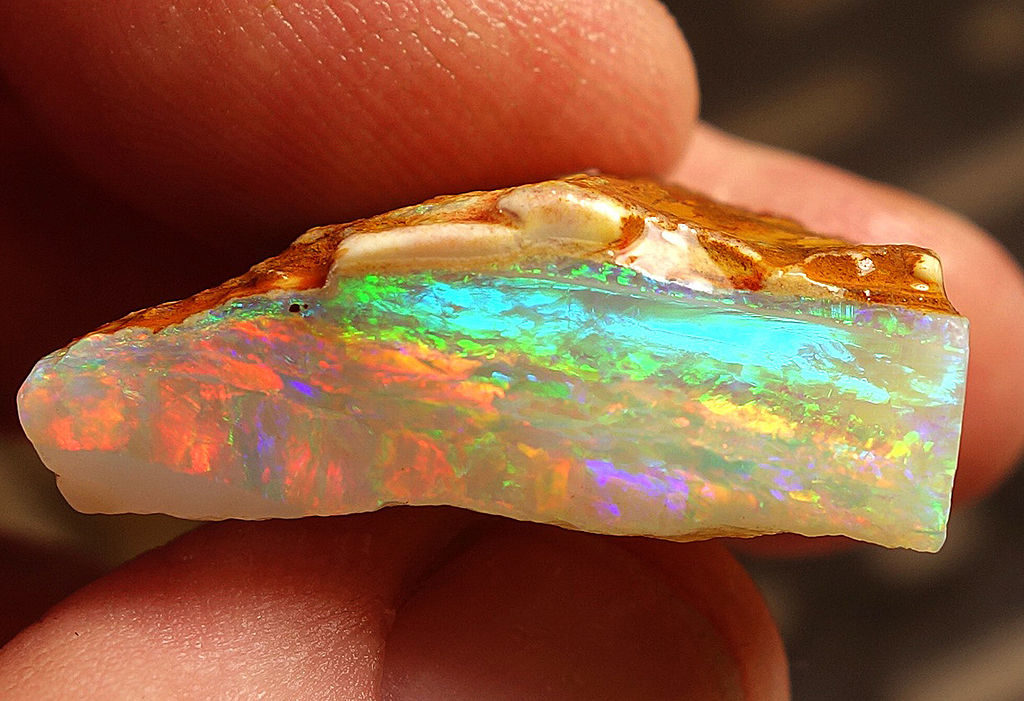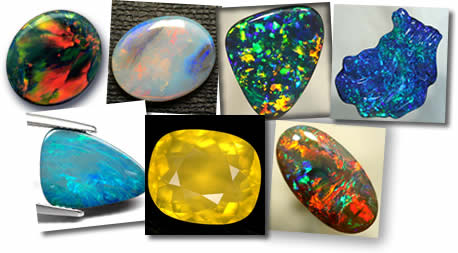On 27 July 1993 the opal, a stone famous throughout the world for its brilliant, fiery colors, was proclaimed as Australia’s national gemstone. The Australian aborigines believed that the colors of the opal were created when a rainbow touched the earth, and, known as the fire of the desert, the opal is indeed a symbol of Australia’s arid center.
Opal is a form of silica, chemically similar to quartz, but containing water within the mineral structure. Precious opal generally contains 6-10% water and consists of small silica spheres arranged in a regular pattern. The spectacular colors are created when light rays hit these spheres. Small spheres produce opal of blue color only, whereas larger spheres produce a red color. Opal with red color can display the entire spectrum. The perceived color of an opal also depends on the angle of light hitting its surface, and the color can change or even disappear when the gem is rotated.
Australian opals are very stable as well as brilliant, which makes them eminently suitable for use in jewelry. Opals from other countries are most often found in areas with volcanic rock; they have high water content and thus tend to crack or “craze” during cutting or polishing, or when kept in hot or dry conditions.
The most precious opals of the highest quality come from Australia, and the most famous of these is black opal which is found at Lightning Ridge in New South Wales. Black opal has a dark background with red, green, blue, violet, magenta, or yellow playing against it.
Lighter opals, known as white opals, with their mix of brilliant colors are found at White Cliffs in New South Wales, and at “the opal capital of the world”, the famous underground town of Coober Pedy in South Australia. The climate is so hot and inhospitable in this outback town set in a moonlike, desert landscape, that the miners and other members of the community build their houses, shops and public buildings under the ground. There are even several underground churches in Coober Pedy – Saint Peter and Paul’s Catholic Church was originally used by all denominations of religion and was built in a true pioneering manner with everyone pitching in to help.
Other types of opal include fire opal, which has a translucent red or orange background, and boulder opal, which is a variety of white opal. Australia has the largest opal fields of any country, which are bigger than those found in the rest of the world combined. Opal production is worth well over $70 million to Australia and supports many communities in South Australia, New South Wales, and Queensland.
Opal is a spectacular gemstone, which can be crafted into attractive and relatively inexpensive jewelry, thus the “fire” of the Australian outback is well known and sought after all around the world.
Source: https://www.gemselect.com/other-info/opal-fire-desert.php


